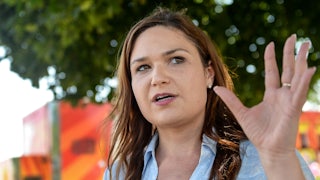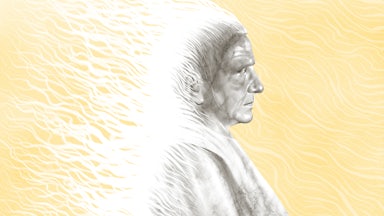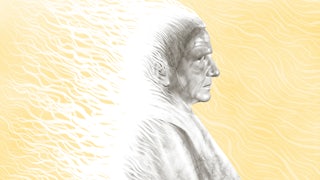Back in 2014, Iowa politics were at an inflection point, though it wasn’t yet apparent at the time. Back then, Iowa was still one of the quintessential purple states. Barack Obama had won two years prior, but longtime Democratic Senator Tom Harkin was retiring, and Tea Party firebrand Joni Ernst was to take his place. Democrats held on to their majority in the state Senate despite national trends favoring Republicans.
But perhaps the most telling race was the one least in doubt. Terry Branstad was running for his sixth term as governor, and his reelection was so predetermined that he primarily concentrated on winning just one place, Lee County. Over the course of his career, the Republican had won 97 of the state’s 99 counties at least once. Johnson County, the left-wing enclave that includes the University of Iowa, was out of reach. But Lee County was doable, and his campaign went out of its way to invest resources there, even airing ads in the full media market that covers Quincy, Illinois, and Hannibal, Missouri, just to reach voters in that traditionally Democratic jurisdiction. It worked, and Branstad earned his bragging rights.
Looking back, Branstad’s narrow win in Lee County was an early sign that the state’s politics were about to flip from purple to deep red. Over the course of the next six years, Iowa Democrats would become a largely endangered species, and Donald Trump would win Lee County by 20 percent. Alongside Trump winning the state for the second time, Republicans held complete control of all major state offices and three of the state’s four seats in the U.S. House, along with both Senate spots. Iowa Democrats woke up on Election Day in 2020 believing they were still in a swing state. They went to bed in a red one.
Iowa has always held an outsize place in the national political imagination. It’s not just because of the key role that it’s first in the nation caucuses play every four years, but because of its seemingly perpetual status as a battleground. Invariably, the state has had competitive races with national implications. And thanks to its location, nestled on the borderlands between the Midwest and Great Plains, it became a convenient barometer for sentiment in Middle America. But unlike other Midwestern states, it is not governed by a single large metro area. Des Moines does not have the dominance of the Twin Cities or Milwaukee, let alone Chicago.
The question that Democrats are grappling with is what type of state Iowa actually is now. In an increasingly uncertain political environment, they are a little bit like Dorothy waking up in Oz as they try to figure out just what is going on. The only difference is Dorothy knew she wasn’t in Kansas, while Iowa politicos are trying to figure out if their state is now just like Kansas.
The political epicenter of the shift in Iowa has been the counties along the Mississippi River. From heavily Roman Catholic Dubuque County in the northeast corner of the state down to blue-collar Lee County at its very southeastern tip, where the Des Moines River meets the Mississippi, these are studded with small to midsize cities that once revolved around industry. They are the type of places where Trump’s wins became the subject of gaudy trivia questions. In Dubuque, he was the first Republican presidential candidate to win since Dwight Eisenhower. Howard County, along the Minnesota border, had an eye-popping swing as the only county in the nation to back Obama by a 20-point margin in 2012 and Trump by a 20-point margin in 2016.
Jeff Link, a top Democratic consultant in the state, described the area as “ground zero” in the state’s political landscape. “The best way for Iowa Democrats to win statewide is to win those blue-collar voters,” he said, noting that both Bill Clinton and Al Gore pointedly campaigned in the region as they started their general election runs.
But Democrats don’t just need to show up in the area again. They need to find a way to win back those voters who have been rejecting them for the better part of the past decade. Zach Wahls, the top Democrat in the Iowa state Senate, described this area as seeing a decline in economic opportunity in the latter twentieth century and early years of the twenty-first. “The reason I think Obama was able to win Iowa in 2008 and 2012 [is] because he was willing to take on forces that sent American jobs overseas.” In contrast, Wahls thought Democrats since then had not appealed to these voters as successfully. “When Democrats dismiss the suffering that those towns are experiencing, I don’t think it should be a surprise that they are willing to try something else,” said Wahls.
A 30-year-old who first received national attention in 2011 with his viral testimony about being raised by two moms, Wahls represents the area around Iowa City, and his spot atop party leadership is, in some ways, a sign of how the state party has moved away from drawing power from the old manufacturing hubs along the Mississippi into representing the state’s few urban cores. But Wahls hasn’t given up hope that the Iowa Democrats can revert back to the base of yore. He told me the key for his party was to return to “an inclusive economic populism message” similar to that espoused by Sherrod Brown in Ohio.
The area bears some resemblance to white working-class parts of Ohio, where candidates like Brown have run well ahead of other Democrats. However, it has not experienced the same scale of economic devastation as has a city like Youngstown, which has seen its population decline by two-thirds over the past half-century as the steel industry collapsed. Dubuque has weathered the economic transformations of the late twentieth century comparatively well. One of the most Catholic areas in the country, it’s firmly culturally a part of the Upper Midwest. That changes the further south one goes along the Mississippi. The residents root for the St. Louis Cardinals, and towns like Burlington or Keokuk haven’t weathered the dislocation of globalization as well. Yet the common thread throughout is the Mississippi River, which was once the great highway of American commerce but has become steadily less vital as decades have passed.
Republicans don’t see any sign of the political atmosphere changing in the 2022 midterms, with the soon-to-be 89-year-old Chuck Grassley expected to easily win reelection. Jeff Kaufmann, the chair of the Republican Party of Iowa since 2014, thinks of it as “a swing state where Democrats have made some bad decisions and keep allowing [the] progressive coastal left to control messaging out here.” But the coastal left is slowly giving up on Iowa. As Rob Sand, the Democratic state auditor, pointed out, 2022 will likely be the first year in nearly three decades that neither the Democratic Governors Association, Democratic Senatorial Campaign Committee, nor a Democratic presidential campaign would make the state a priority. However, he’s confident this is a blip. “We’ll look back at this time as the exception to the rule,” he told me, “and Iowa will return to its swing state status.”
Sand himself is an exception to the political trends in Iowa. He is the only new statewide Democrat elected since the George W. Bush administration and, despite his relatively obscure job, has become the top fundraiser on a ticket otherwise packed with long shots and sclerotic incumbents. But even he passed on the gubernatorial race this year against Republican incumbent Kim Reynolds. Instead, the Democratic nominee, Deidre DeJear, is a sacrificial lamb who is a weak fundraiser and ran a lackluster statewide campaign in 2018, when she trailed the rest of the statewide ticket.
The trends that have seen a national realignment in politics in recent years leave Democrats at a particular disadvantage in Iowa. While the party has done better with voters who are younger, more diverse, and more well-educated, Iowans are disproportionately older, whiter, and less likely to have a college degree. Democrats are losing places like Dubuque across the country. The problem is there just aren’t enough urban areas in Iowa to offset the losses elsewhere, even as the cities grow while rural areas depopulate. For example, in neighboring Minnesota, Democrats have countered losses in the Iron Range by gaining affluent voters in Minneapolis and St. Paul. But metro Des Moines is only one-fifth the size of the Twin Cities, and the gains Democrats have made there just can’t offset their losses across the rest of the state.
The other challenge is simply the collapse of split-ticket voting. For decades, a large group of voters might support Harkin one year, and then give their ballots to Grassley in the next election. In 2004, Grassley got almost 300,000 more votes than George W. Bush in a state where 1.5 million votes were cast in total. Still, while the top-line results are grim for Democrats, it may simply be a quirk of luck and circumstance. After all, in 2018 Democratic gubernatorial nominee Fred Hubbell narrowly lost to an incumbent, and Republicans won the congressional race in Iowa’s 2nd District in 2020 by precisely six votes. But when one side keeps on getting all the breaks, it starts to be a pattern.
One tough loss is a tragedy; two is a run of bad luck. But once it starts to last the better part of a decade, something else is happening. Nothing in politics is ever static—after all, who could have predicted a year ago that the midterms would be dominated by skyrocketing inflation and a ground war in Eastern Europe? But it’s hard to see these white, blue-collar towns turning back into Democratic strongholds any time soon.






